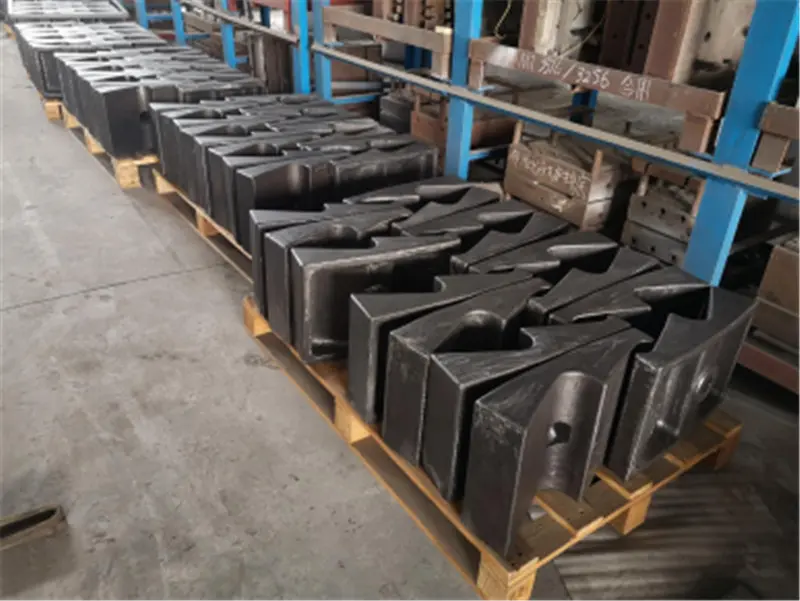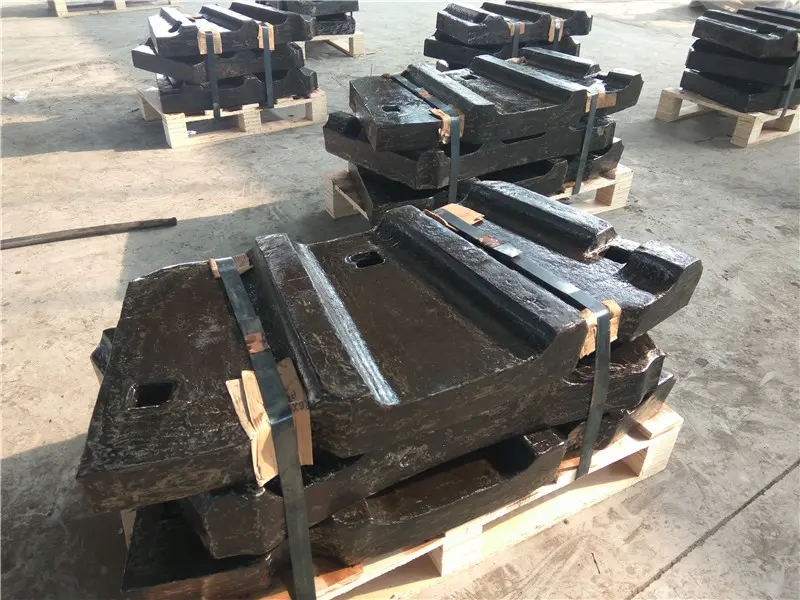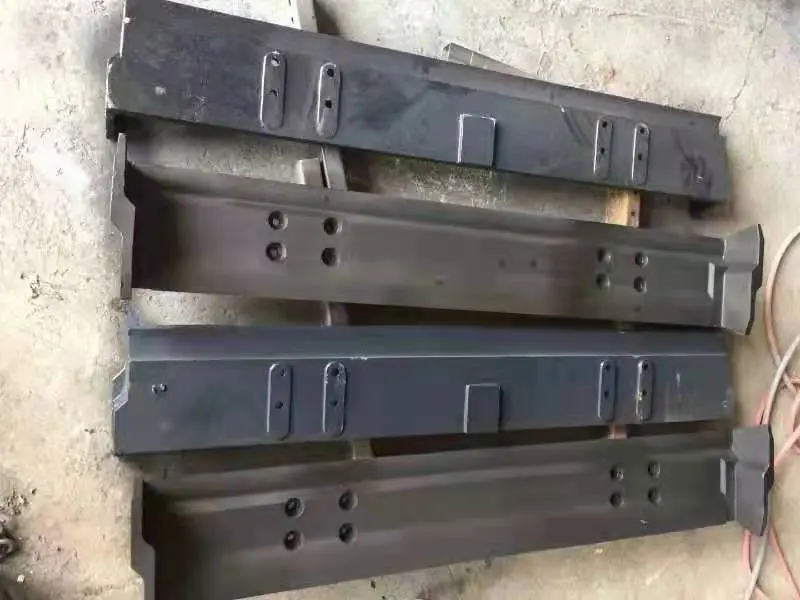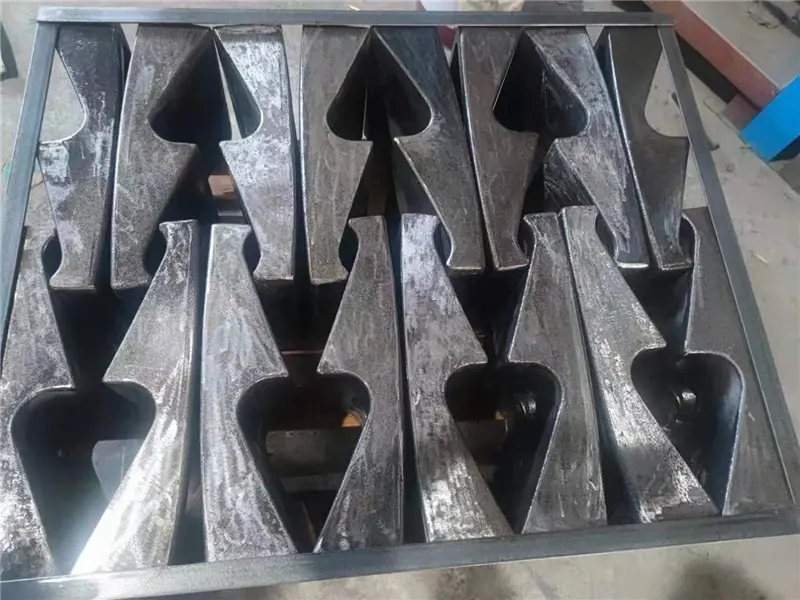Manganese Steel
Main Products: Track plate, hammer head, liner plate
Main Process: Shell casting, wax loss casting, sand casting, foam loss casting.
Application: Mineral industry, mining, machinery, construction machinery,...
High manganese steel
Manganese steel is a type of steel alloy that contains high amounts of manganese. It is known for its incredible strength and durability, making it ideal for use in applications where high levels of wear and tear are expected. Manganese steel is widely used in the production of railroad rails, rock crushing machines, mining equipment, etc. It is also known for its hardening ability, which means that it becomes even harder when subjected to repeated impact or pressure.
This type of steel contains between 10 and 15% manganese with a high carbon content, typically between 0.90% and 1.50%, and in most cases more than 1.0%.
Technical Parameters
| Physical parameters | Chemical Composition (%) | ||
| Yield strength | 60,000--85,000 psi | Mn | 12.0--14.0 |
| Tensile strength | 120,000--130,000 psi | C | 1.00--1.25 |
| Elongation | 35%--50% | Si | ≤0.60 |
| Rolling hardness | 230--255 bhn | P | ≤0.05 |
| Maximum hardness | 550bhn | S | ≤0.04 |
| Magnetism | No | Fe | 85.0—88.0 |
C0.90-1.50
Mn10.0-15.0
Si0.30~1.0
S ≤ 0.05
P ≤ 0.10
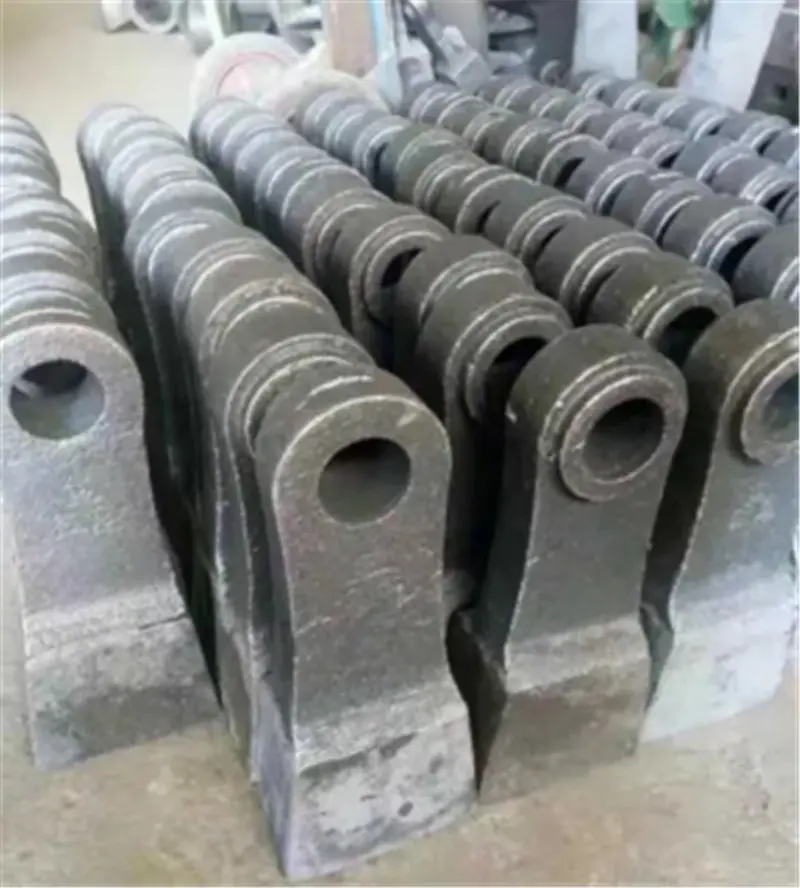
High manganese steel
This type of high manganese steel has the widest application and is commonly used to make shovel teeth for excavators, roll and crushing walls for cone crushers, toggle plates for jaw crushers, liner plates for ball mills, railroad switches, plate hammers, hammer heads, etc.
The cast structure of high manganese steel with the above components usually consists of austenite, carbides and pearlite, and sometimes also contains a small amount of phosphorus eutectic. If large amounts of carbides are present, they often appear as a network at grain boundaries. High manganese steel with a cast structure is therefore very brittle and cannot be used, requiring solid solution treatment. The method of solid solution heat treatment is commonly used, which involves heating the steel to 1050-1100 ℃, insulating it to eliminate the cast structure, obtaining a single-phase austenitic structure, and then quenching it in water to maintain this structure at room temperature. After heat treatment, the strength, ductility and toughness of steel are greatly improved, so this heat treatment method is also often called water quenching method. Mechanical properties after heat treatment: σ B615~1275MPa σ S340~470MPa ζ 15% to 85% ψ 15%~45% aKl96-294J/cm2 HBl80-225
It can reach HB300-400 at low impact loads and HB500-800 at high impact loads. The depth of the surface hardening layer can reach 10-20mm depending on the impact load. The high hardness hardening layer can resist impact abrasion. High manganese steel has excellent wear resistance under high impact abrasion, so it is often used in mining, building materials, thermal power and other mechanical equipment for wear-resistant parts. Under low impact wear conditions, high manganese steel cannot fully utilize the material characteristics due to the insignificant hardening effect.


